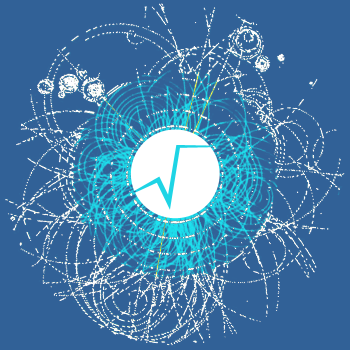Conveners
Experiments Perspective
- Guilherme Amadio (CERN)
Experiments Perspective
- Guilherme Amadio (CERN)
Experiments Perspective
- Guilherme Amadio (CERN)
This talk will give a short overview over the Belle II Software
Framework and its use in offline and online data processing. It will
highlight the use of ROOT for data storage and inter-process
communication as well as our Python 3 integration and user
interface. Finally we will present some feedback and requests,
primarily from the offline side.
We will discuss ROOT and its impact in the CMS offline production software, analysis and online systems. We will identify ways that CMS relies on ROOT components, which span a broad space that reaches most aspects of the experiment software stack. We'll focus our discussion on current development activities and lessons learned around areas of software operations, data storage, I/O, data...
CERN LHCb experiment has been using ROOT for 20 years as back-end for storing the reconstructed event data and the stripped down data used for physics analysis.
With the ongoing work to prepare the experiment software for the upgrade of the detector happening during LHC second Long Shutdown, we are reviewing the LHCb software framework Gaudi to improve the code base in terms of performance,...
The second stage of the LHCb software trigger application consists of an
up-front event reconstruction followed by approximately 500 independent
event selections. Monitoring of the performance of the reconstruction and
selections is crucial to detect and address issues that may appear as soon
as possible. To this end, each process produces approximately $3 * 10^3$
monitoring histograms,...
DD4hep is a detector geometry package which can provide
all auxiliary information necessary to process data from
particle collisions in high energy physics such as geometry
and readout information, but also interfaces to conditions
and alignment data. DD4hep supports all data processing
activities of an experiment: simulation, reconstruction
and analysis.
The modeling of the geometry of a...
The talk will present the plans for the evolution of the ROOT geometry package in relation with VecGeom development. The future integration of VecGeom performance features and the impact on external frameworks depending on TGeo (such as DD4HEP or VMC) will also be discussed.
We are going to present the N-dimensional analysis pipeline of the ALICE experiment, including creation of materialized views, n-dimensional histogramming package, statistical maps extraction, local regression and optimizer of physical models.
Besides we will demonstrate how the pipeline can be interfaced to the TMVA package.
We will show multiple examples of the pipeline usage in the ALICE...
The International Linear Collider is a linear e+e- collider project expected to be built in Japan. In order to study the potential physics discoveries with such a collider, the ILCSoft framework has been developed by the ILC and CLIC collaborations. As for most of the experiment frameworks, ROOT plays a central role in ILCSoft. In particular, the DD4hep package, based on the TGeo component of...
The art framework, used by roughly a dozen HEP experiments, provides simple interactions with ROOT for its users. In addition to facilities that enable dictionary generation and ROOT-based input sources and output modules, art also provides easy user interaction with ROOT constructs from within the framework.
We describe how art and its experiments use ROOT, both within the framework...
SHiP is an experiment that is currently being designed to look for hidden particles beyond the Standard Model at CERN's SPS. As a SHiP PhD student working (among other things) on its software, I will give an overview of the SHiP software stack, with a focus on how we use ROOT, and how we would like it improve.
I will cover some aspects that are common to small experiments using ROOT, but also...
